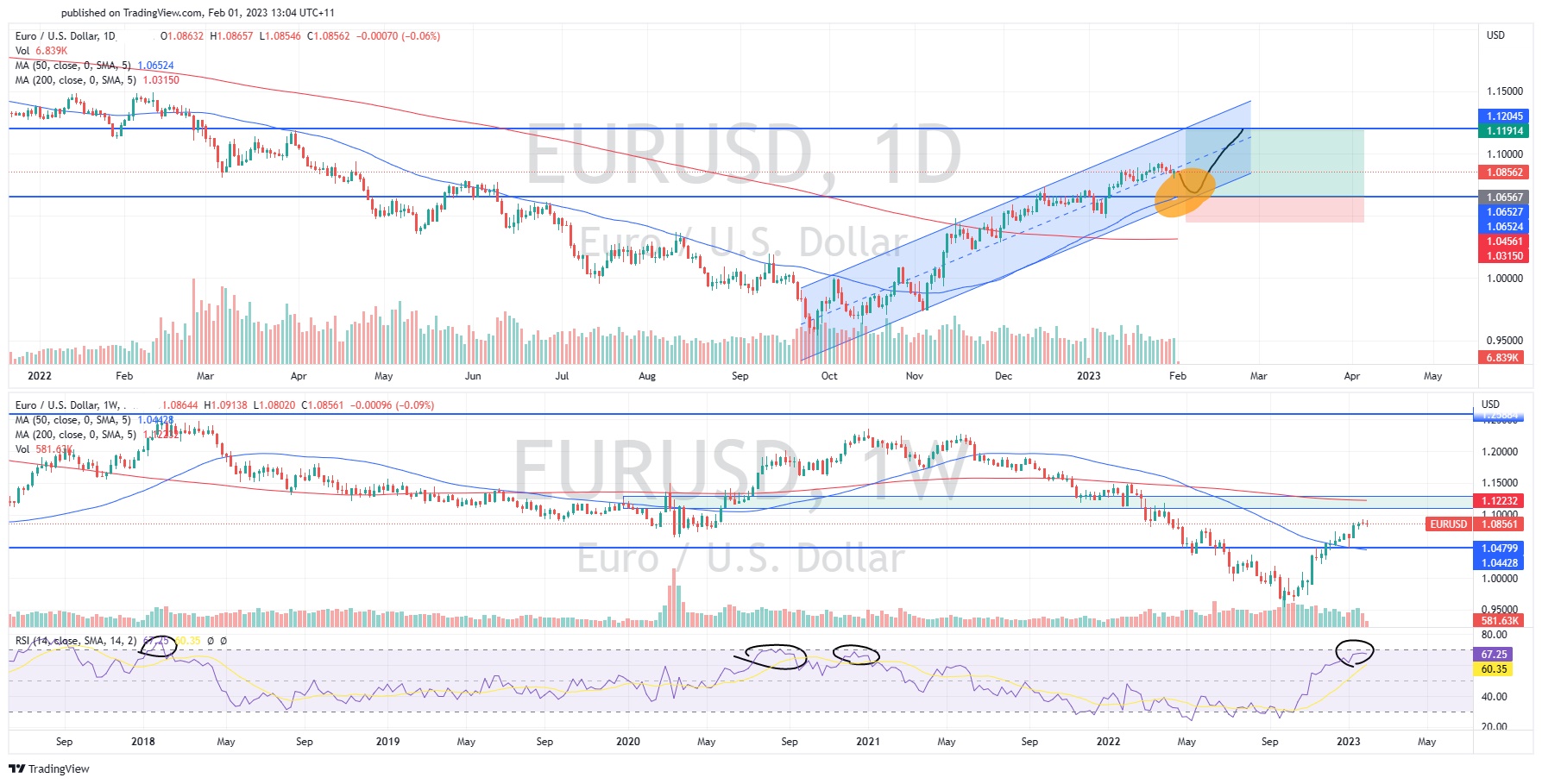- Accounts
- About
- Trading
- Platforms
- Tools
- News & education
- News & education
- News & analysis
- Education hub
- Economic calendar
News & Analysis
EUR looking to continue its bullish trend ahead of FOMC and ECB meeting
1 February 2023The EUR has been on a run since it bottomed in September 2022. From that time, the price is up almost 15% and is currently trading at 1.0863. However, with important economic data to come out of the USA and the next interest rate decision from both the ECB and the Federal Reserve coming out in the next few days the market may find some more direction for the EUR. A Hawkish Federal Reserve may be detrimental for a move to the upside of the EUR, whilst a Dovish response may support more growth in the EUR. In addition, with employment data to come out of the USA softer data may support a more dovish Federal reserve.
In the past few days and weeks, the EUR has seen some strong momentum on the back of growth data that has seen the region avoid a recession. Crucially, the GDP of the Eurozone grew by 0.1% which beat an expected 0.1% retraction for the quarter. A general weakening of the USD has also supported a bounce of the EUR as money has moved away from the safety of the greenback and into other assets.

Technical Analysis
In terms of the long-term analysis, the price has mostly ranged between 1.04 and 1.25 except when the price bottomed last year. The price is currently showing some weakness and has so far been unable to break through 1.09 and has sold down on candlesticks that are testing the 1.09 level. Therefore, it would not be surprising to see the price retrace to the previous support level at 1.06 before another move to the upside.
On the daily price chart, the price is showing a strong upward channel/trend. This channel shows how the bottom of the channel fall along an important area of market structure. This zone acts as the 50-day moving average, the recent support level and the bottom of the channel. This bolsters this region as a zone for ana entry should the price retrace. With a target of 1.12 this represents a risk reward of 2.5.
Ultimately the trend of the EUR will most likely be dictated by the movements of the Federal reserve and the ECB. However, should the macroeconomic factors permit, the EUR could very well continue its run.
Disclaimer: Articles are from GO Markets analysts and contributors and are based on their independent analysis or personal experiences. Views, opinions or trading styles expressed are their own, and should not be taken as either representative of or shared by GO Markets. Advice, if any, is of a ‘general’ nature and not based on your personal objectives, financial situation or needs. Consider how appropriate the advice, if any, is to your objectives, financial situation and needs, before acting on the advice. If the advice relates to acquiring a particular financial product, you should obtain and consider the Product Disclosure Statement (PDS) and Financial Services Guide (FSG) for that product before making any decisions.
Next Article
“Deflationary process has begun” as Federal Reserve increase Funds rate by 25 bps
The US equities market has had a sharp rise to end the trading session as the Federal Reserve announced a 25-bps interest rate rise. Whilst the market had mostly priced in the 25-bps rise, it was the associated commentary that gave the market a boost. Fed Chairman, Jerome Powel made it clear in his statement and press conference that the Fed is ...
February 2, 2023
Read More >
Previous Article
Notice to clients – Scam websites warning
In this climate of phishing and scam websites and messages, we’d like to take this opportunity to remind our clients of the official GO Markets webs...
January 31, 2023
Read More >

